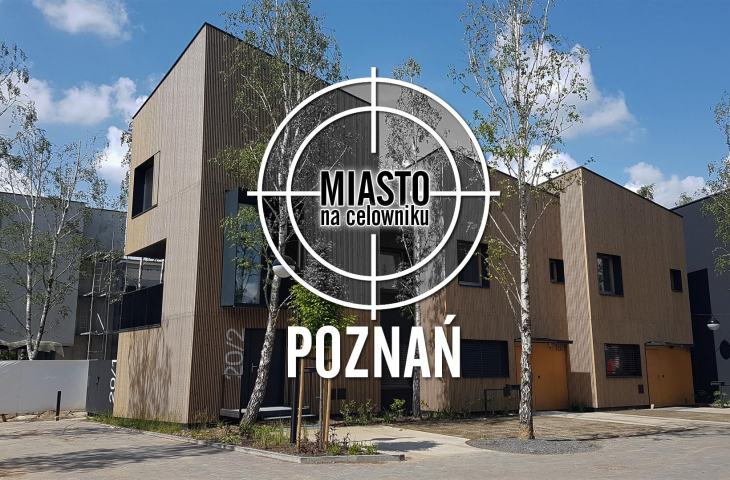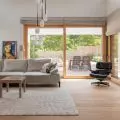Without publicity, self-promotion and presentation in portals about nice houses, one of the best residential enclaves in post-war Poznań is being built. It combines the advantages of an apartment and a house with a garden, and can already be counted among the country's leaders.
Poznan's unique housing estate is unpretentiously named: Nowy Strzeszyn. This is because it is being built in one of the last free quarters of the Strzeszyn district, which has been under development for more than three decades. The intimate housing estate (the target number will be around a hundred apartments) has been integrated into a birch forest between Literacka, Epicka, Malewska and Różanski streets. Unlike the actions of other developers, the relatively young trees did not go under the axe here. On the contrary - they were considered an asset and the layout of the entire enclave was subordinated to them.
an intimate estate like out of a book
Visiting the completed part of the first stage, we can therefore get the impression that we have teleported to Holland, England or Scandinavia. Or - to the pages of the once popular book "Small housing complexes". Published in 1983, the Polish translation of the study by Paulhans Peters and Rolf Rosner presented intimate (high density, small scale) housing estates in Great Britain and Germany. Polish architects sighed at the book's ideals, but neither in the last years of communistPoland nor after the transformation did they have many opportunities to follow in the footsteps of their Western colleagues.
In the case of Strzeszyn, "Small ensembles..." were our bible," admits Szymon Januszewski, head of the Insomia studio, where the New Strzeszyn project was created, to being inspired by the still current reading. - We cared about small scale, diversity, optimal use of space and creating conditions for neighborhood interaction, he adds.
The diversity in the housing estate was achieved, among other things, through the different cladding of similar segments, their dodged layout or the design of pedestrian passages between buildings.
Photo: Jakub Glaz
Insomia architects are not newcomers. In Poznań, although less well known than local execs putting up expensive and flimsy houses, they have some of the best residential projects to their credit. Their blocks and blocks of apartments are not only good blocks or elevations, but - above all - exemplary apartment floor plans.
In Strzeszyn, we additionally focused on urban planning. In this project we felt what power it has," adds Januszewski, who together with his team had to fit into the already strongly defined shape of the district.
Poznan Strzeszyn
Until the 1990s, Strzeszyn, or rather the adjacent Strzeszynek, was associated with forests and a lake besieged by Poznan residents in the summer. The future of the several hundred hectares between the Strzeszyn forests and the PKP tracks to Koszalin was not clear. During the Gierek era, there were attempts to move the Poznañ International Fair there. In 1978 an urban planning competition was held, but in the following decade a decision was made: Strzeszyn will be mainly home to single-family and terraced houses and, to a lesser extent, multifamily houses.
Another competition - for the design of the entire complex - was won in 1986 by a Warsaw team of architects: Janusz Falkiewicz, Janusz Szymanski and Piotr Wicha. The realization fell into ruts far from the original concept, but nevertheless managed to create as such a skeleton of the whole. Urbanistically, Strzeszyn is quite legible, though not without shortcomings. The district still lacks a clear center with a square. For years it lacked services, schools and kindergartens, and there is no community center. Only this year a decision was made to build a second district school. Access to the nearby city center is getting worse and worse. The swollen Strzeszyn, cut off by the railroad tracks, faces traffic jams in front of barriers. A streetcar or an efficient metropolitan railroad are distant visions. Slowly, plans to build road overpasses over the tracks are crystallizing.
Still, urban planning stands above architecture here. The first houses and row houses were built individually, though according to standardized designs. Thrifty postmodernism enriched with fussy additions reigned supreme. Subsequent areas - intended for multi-family housing - were developed by developers or TBS, while the vast areas north of the first stages fell into the hands of individual investors. The average level of architecture here deserves a solid three-plus.










































